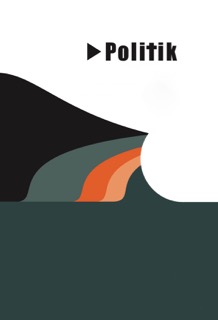A Religious Media Revolution? The Syrian Conflict and Mediated Sunni Authority
DOI:
https://doi.org/10.7146/politik.v19i4.27635Resumé
This article is a preliminary survey of the media usage of Sunni religious actors during the Syrian conflict. It traces the adoption of new media by religious actors, and analyses the kind of authority these actors have sought to embody, whether regime supporting, oppositional or jihadist. It argues that the conflict has completely altered the means and modes of Sunni religious communication, transforming classical genres and bypassing them with new ones. It concludes that the lack of formal authority in the messaging of the jihadist groupings, and their failed efforts to build up credible religious leaders, is a weakness that could well be exploited in the period to come.Referencer
Alterman, J 2011, ‘The Revolution Will Not Be Tweeted’, in The Washington Quarterly, vol. 34, no. 4, pp. 103-116.
Al-Buti 2011a, Symposium in the Nur al-Islam channel. Available at: https://www.youtube.com/watch?v=MeSz7zvhcIs [Accessed November 24 2016].
Al-Buti (2011b), Fatwa on shooting into crowds. Available at: http://www.naseemalsham.com/ar/Pages.phppage=readFatwa&pg_id=14375&back=8913; [Accessed November 24 2016]
Al-Tamimi, A 2013, ‘Jihad in Syria (Part II): The Assad Regime Perspective’, in Syria Comment, Available at: http://www.joshualandis.com/blog/jihad-in-syria-part-ii-the-assad-regime-perspective-by-aymenn-jawad-al-tami-mi/?utm_source=feedburner&utm_medium=email&utm_campaign=Feed%3A%20Syriacomment%20%28Syria%20Comment%29
Bunzel, C 2016, The Kingdom and the Caliphate. Duel of the Islamic States, Washington, Carnegie.
Galal, E (ed.) 2014, Arab TV-Audiences. Negotiating Religion and Identity, Frankfurt AM, Peter Lang Verlag.
Islamic State 2016a, Wahy Shaytan. Available at: http://jihadology.net/2016/06/25/new-video-message-from-the-islamic-state-revelations-of-satan-wilayat-al-khayr/ [Ac-cessed 24 November 2016]
Islamic State 2016b, The Structure of the Caliphate. Available at: http://jihadology.net/2016/07/06/new-video-message-from-the-islamic-state-the-structure-of-the-caliphate/ [Accessed November 24 2016].
Lynch, M 2006, Voices of the New Arab Public, New York, Columbia University Press.
Lynch, M 2015, ‘The Rise and Fall of the New Arab Public Sphere’, Current History, pp. 331-36.
Novenario, CM 2016, ‘Differentiating Al Qaeda and the Islamic State through Strategies Publicized in Jihadist Magazines’, Studies in Conflict and Terrorism. DOI: 10.1080/1057610X.2016.1151679
O’Bagey, E 2012, ‘Jihad in Syria’, Washington: Institute for the Study of War. Available at: http://www.understandingwar.org/sites/default/files/Jihad-In-Syria-17SEPT.pdf [Accessed 24 November 2016]
Pierret, T 2011, Baas et Islam en Syrie, Paris, Puf.
Rugh, W 1979, The Arab Press, Syracuse: Syracuse University Press.
SA 2015, ‘Ahmad Badr al-Din Hassoun – dhabit al-mukhabarat bi rutbat mufti’. Available at: http://aawsat.com/home/article/342446/%D8%A3%D8%AD%D9%85%D8%AF-%D8%A8%D8%AF%D8%B1-%D8%A7%D9%84%D8%AF%D9%8A%D9%86-%D8%AD%D8%B3%D9%88%D9%86-%D8%B6%D8%A7%D8%A8%D8%B7-%D9%85%D8%AE%D8%A7%D8%A8%D8%B1%D8%A7%D8%AA-%D8%A8%D8%B1%D8%AA%D8%A8%D8%A9-%D9%85%D9%81%D8%AA%D9%8D [Accessed 24 November 2016]
Skovgaard-Petersen, J 2014, ‘New Media in the Muslim World‘, The Oxford Encyclo-pedia of Islam and Politics, vol. 2, pp. 183-88.
Skovgaard-Petersen, J 2016, ‘Arven fra Abu Bakr. Om historieopfattelse og ideologi hos Al-Qaeda og IS’, in: Splittelsen i Global Jihad, Copenhagen, DIIS Forlag.
Sreberny, A and Mohammedi, A 1994, Small Media, Big Revolution: Communication, Culture, and the Iranian Revolution, Minneapolis, University of Minnesota Press.
Wedeen, L 1999, Ambiguities of Domination, Chicago, University of Chicago Press.
Winter, C 2015, Documenting the Virtual ‘Caliphate’, London, Quilliam Foundation.
Al-Buti 2011a, Symposium in the Nur al-Islam channel. Available at: https://www.youtube.com/watch?v=MeSz7zvhcIs [Accessed November 24 2016].
Al-Buti (2011b), Fatwa on shooting into crowds. Available at: http://www.naseemalsham.com/ar/Pages.phppage=readFatwa&pg_id=14375&back=8913; [Accessed November 24 2016]
Al-Tamimi, A 2013, ‘Jihad in Syria (Part II): The Assad Regime Perspective’, in Syria Comment, Available at: http://www.joshualandis.com/blog/jihad-in-syria-part-ii-the-assad-regime-perspective-by-aymenn-jawad-al-tami-mi/?utm_source=feedburner&utm_medium=email&utm_campaign=Feed%3A%20Syriacomment%20%28Syria%20Comment%29
Bunzel, C 2016, The Kingdom and the Caliphate. Duel of the Islamic States, Washington, Carnegie.
Galal, E (ed.) 2014, Arab TV-Audiences. Negotiating Religion and Identity, Frankfurt AM, Peter Lang Verlag.
Islamic State 2016a, Wahy Shaytan. Available at: http://jihadology.net/2016/06/25/new-video-message-from-the-islamic-state-revelations-of-satan-wilayat-al-khayr/ [Ac-cessed 24 November 2016]
Islamic State 2016b, The Structure of the Caliphate. Available at: http://jihadology.net/2016/07/06/new-video-message-from-the-islamic-state-the-structure-of-the-caliphate/ [Accessed November 24 2016].
Lynch, M 2006, Voices of the New Arab Public, New York, Columbia University Press.
Lynch, M 2015, ‘The Rise and Fall of the New Arab Public Sphere’, Current History, pp. 331-36.
Novenario, CM 2016, ‘Differentiating Al Qaeda and the Islamic State through Strategies Publicized in Jihadist Magazines’, Studies in Conflict and Terrorism. DOI: 10.1080/1057610X.2016.1151679
O’Bagey, E 2012, ‘Jihad in Syria’, Washington: Institute for the Study of War. Available at: http://www.understandingwar.org/sites/default/files/Jihad-In-Syria-17SEPT.pdf [Accessed 24 November 2016]
Pierret, T 2011, Baas et Islam en Syrie, Paris, Puf.
Rugh, W 1979, The Arab Press, Syracuse: Syracuse University Press.
SA 2015, ‘Ahmad Badr al-Din Hassoun – dhabit al-mukhabarat bi rutbat mufti’. Available at: http://aawsat.com/home/article/342446/%D8%A3%D8%AD%D9%85%D8%AF-%D8%A8%D8%AF%D8%B1-%D8%A7%D9%84%D8%AF%D9%8A%D9%86-%D8%AD%D8%B3%D9%88%D9%86-%D8%B6%D8%A7%D8%A8%D8%B7-%D9%85%D8%AE%D8%A7%D8%A8%D8%B1%D8%A7%D8%AA-%D8%A8%D8%B1%D8%AA%D8%A8%D8%A9-%D9%85%D9%81%D8%AA%D9%8D [Accessed 24 November 2016]
Skovgaard-Petersen, J 2014, ‘New Media in the Muslim World‘, The Oxford Encyclo-pedia of Islam and Politics, vol. 2, pp. 183-88.
Skovgaard-Petersen, J 2016, ‘Arven fra Abu Bakr. Om historieopfattelse og ideologi hos Al-Qaeda og IS’, in: Splittelsen i Global Jihad, Copenhagen, DIIS Forlag.
Sreberny, A and Mohammedi, A 1994, Small Media, Big Revolution: Communication, Culture, and the Iranian Revolution, Minneapolis, University of Minnesota Press.
Wedeen, L 1999, Ambiguities of Domination, Chicago, University of Chicago Press.
Winter, C 2015, Documenting the Virtual ‘Caliphate’, London, Quilliam Foundation.
Downloads
Publiceret
2016-12-02
Citation/Eksport
Skovgaard-Petersen, J. (2016). A Religious Media Revolution? The Syrian Conflict and Mediated Sunni Authority. Politik, 19(4). https://doi.org/10.7146/politik.v19i4.27635
Nummer
Sektion
Tema
Licens
Copyright (c) 2016 Forfatteren og Tidsskriftet Politik har sammen rettighederne til materiale publiceret i Politik

Dette værk er under følgende licens Creative Commons Navngivelse (by).
Forfattere, der publicerer deres værker via dette tidsskrift, accepterer følgende vilkår:
- Forfattere bevarer deres ophavsret og giver tidsskriftet ret til første publicering, samtidigt med at værket er omfattet af en Creative Commons Attribution-licens, der giver andre ret til at dele værket med en anerkendelse af værkets forfatter og første publicering i nærværende tidsskrift.
- Forfattere kan indgå flere separate kontraktlige aftaler om ikke-eksklusiv distribution af tidsskriftets publicerede version af værket (f.eks. sende det til et institutionslager eller udgive det i en bog), med en anerkendelse af værkets første publicering i nærværende tidsskrift.
- Forfattere har ret til og opfordres til at publicere deres værker online (f.eks. i institutionslagre eller på deres websted) forud for og under manuskriptprocessen, da dette kan føre til produktive udvekslinger, samt tidligere og større citater fra publicerede værker (se The Effect of Open Access).

